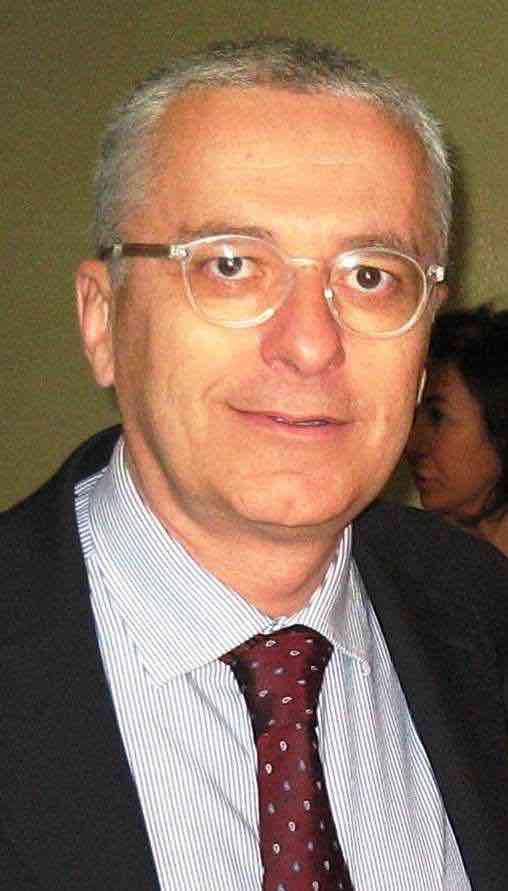Studying at the University of Verona
Here you can find information on the organisational aspects of the Programme, lecture timetables, learning activities and useful contact details for your time at the University, from enrolment to graduation.
Academic calendar
The academic calendar shows the deadlines and scheduled events that are relevant to students, teaching and technical-administrative staff of the University. Public holidays and University closures are also indicated. The academic year normally begins on 1 October each year and ends on 30 September of the following year.
Course calendar
The Academic Calendar sets out the degree programme lecture and exam timetables, as well as the relevant university closure dates..
| Period | From | To |
|---|---|---|
| LMSIO VR - 2° ANNO 1° SEM. | Oct 8, 2020 | Feb 13, 2021 |
| LMSIO VR - 1° ANNO 1° SEM. | Nov 19, 2020 | Mar 20, 2021 |
| LMSIO VR - 1° ANNO 2° SEM. | Apr 15, 2021 | Jun 26, 2021 |
| LMSIO VR - 2° ANNO 2° SEM. | Apr 15, 2021 | Jun 26, 2021 |
| Session | From | To |
|---|---|---|
| Sessione invernale 2° anno Lm Sio Vr | Mar 1, 2021 | Mar 31, 2021 |
| Sessione invernale 1° anno Lm Sio Vr | Mar 15, 2021 | Apr 10, 2021 |
| Sessione estiva Lm Sio Vr | Jul 1, 2021 | Jul 31, 2021 |
| Sessione autunnale Lm Sio Vr | Sep 1, 2021 | Sep 30, 2021 |
| Session | From | To |
|---|---|---|
| Prima sessione Lm Sio Vr | Jun 14, 2021 | Jul 30, 2021 |
| Seconda sessione Lm Sio Vr | Nov 15, 2021 | Jan 14, 2022 |
| Terza sessione Lm Sio Vr | Mar 1, 2022 | Apr 29, 2022 |
| Period | From | To |
|---|---|---|
| FESTIVITA' OGNISSANTI | Nov 1, 2020 | Nov 1, 2020 |
| CHIUSURA ATENEO PONTE IMMACOLATA | Dec 7, 2020 | Dec 7, 2020 |
| FESTIVITA' IMMACOLATA CONCEZIONE | Dec 8, 2020 | Dec 8, 2020 |
| VACANZE DI NATALE | Dec 24, 2020 | Jan 3, 2021 |
| VACANZE DI PASQUA | Apr 4, 2021 | Apr 5, 2021 |
| FESTIVITA' DELLA LIBERAZIONE | Apr 25, 2021 | Apr 25, 2021 |
| FESTIVITA' DEL LAVORO | May 1, 2021 | May 1, 2021 |
| FESTIVITA' DEL SANTO PATRONO SAN ZENO | May 21, 2021 | May 21, 2021 |
| FESTIVITA' DELLA REPUBBLICA | Jun 2, 2021 | Jun 2, 2021 |
| VACANZE ESTIVE | Aug 14, 2021 | Aug 22, 2021 |
| Description | Period | From | To |
|---|---|---|---|
| Stage 2° anno Lm Sio Vr | Stage 2° anno Lm Sio Vr | Jul 1, 2021 | Nov 30, 2021 |
Exam calendar
Exam dates and rounds are managed by the relevant Medicine Teaching and Student Services Unit.
To view all the exam sessions available, please use the Exam dashboard on ESSE3.
If you forgot your login details or have problems logging in, please contact the relevant IT HelpDesk, or check the login details recovery web page.
Should you have any doubts or questions, please check the Enrollment FAQs
Academic staff
 mcarfagna@ausl-cesena.emr.it
mcarfagna@ausl-cesena.emr.it
 trap71@hotmail.com
trap71@hotmail.com
 tullio.ferrari@univr.it
tullio.ferrari@univr.it
 alberto.mattei@univr.it
alberto.mattei@univr.it
 alvisa.palese@dstb.uniud.it
alvisa.palese@dstb.uniud.it
 loredana.pancheri@univr.it
loredana.pancheri@univr.it
 sara.pilotto@univr.it
sara.pilotto@univr.it
 stefania.pretto@univr.it
stefania.pretto@univr.it
 danielesalmaso@fondazionezancan.it
danielesalmaso@fondazionezancan.it
 fvallicella@vodafone.it
fvallicella@vodafone.it
 cinzia.vivori@apss.tn.it
cinzia.vivori@apss.tn.it
Study Plan
The Study Plan includes all modules, teaching and learning activities that each student will need to undertake during their time at the University.
Please select your Study Plan based on your enrollment year.
1° Year
| Modules | Credits | TAF | SSD |
|---|
2° Year activated in the A.Y. 2021/2022
| Modules | Credits | TAF | SSD |
|---|
| Modules | Credits | TAF | SSD |
|---|
| Modules | Credits | TAF | SSD |
|---|
Legend | Type of training activity (TTA)
TAF (Type of Educational Activity) All courses and activities are classified into different types of educational activities, indicated by a letter.
Research Methods for Evidence-Based Practice (2020/2021)
The teaching is organized as follows:
Program
Introduction to Evidence –Based Practice (EBP)
The significance of EBP in the development of nursing/midwifery science
Definition of Evidence Based Nursing (EBN)
Steps of the EBP/EBN
Clinical question formulation using the PICO format
Background and foreground questions
Searching for the best evidence
Designing and conducting the search for evidence in multiple evidence databases
Searching databases: PubMed/Medline, CINAHL, PsycINFO®, Tripdatabase
Instruments of EBP: sistematic review, meta-analysis, Critical Appraisal Topic, Health Technology Assessment Facilitating evidence-based practice in nursing and midwifery
Overview of the guideline development process from question formulation to recommendation development.
Methods to facilitate the introduction of guidelines in practice: dissemination and implementation
Evidence that guideline based care can change clinical practice and patient outcomes
Using guidelines for making decisions
Definition of data, information, knowledge. Processing of data to obtain information. Application programs for data collection, management, processing and representation.
Spreadsheets: Excel and Open Source suites (Libre Office, Open Office). Data entry, mathematical, logical, text manipulation functions, the main statistical functions with examples of use. The representation of data in graphs. Tutorial with Excel / Libre Office Spreadsheet.
The relational databases (outline): structure, conceptual and physical schemes, the SQL language for managing DBs, examples with an individual productivity database (MS Access or Libre Office Base).
Bibliography
| Author | Title | Publishing house | Year | ISBN | Notes |
|---|---|---|---|---|---|
| Greenhalgh Trisha | Come implementare l'assistenza sanitaria basata sulle evidenze (Edizione 1) | Il Pensiero Scientifico Editore | 2018 | ||
| Pomponio G., Colosso A. | EBM e metodologia della ricerca per le professioni sanitarie | CG Edizioni Medico Scientifiche. Torino | 2005 | ||
| Polit DF, Beck CT. Edizione italiana a cura di Palese A. | Fondamenti di Ricerca Infermieristica (Edizione 2) | McGraw-Hill Education | 2018 | ||
| AAVV | Linee guida e decisioni infermieristiche -Assistenza Inferm. e ricerca (Edizione 3) | Pensiero scientifico editore | 2014 | ||
| D. Giuliani, M. M. Dickson | Analisi statistica con Excel | Maggioli Editore | 2015 | 8838789908 | |
| Simona Villani, Paola Borrelli | Excel & statistica medica. Guida pratica per le professioni sanitarie | Medea | 2013 | 978-88-6693-048-8 | |
| Curtis Frye | Microsoft Excel 2016: La guida ufficiale (Edizione 1) | Hoepli | 2016 | 9788820374785 |
Examination Methods
The objective of this exam is to evaluate the knowledge acquired by the student and particularly his/her ability to apply it in a proficient way.
The exam shall include different levels:
- written examination with multiple choice and open questions to assess students' understanding of the EBP and research concepts covered in the course and their ability to apply critical appraisal skills to the assessment and interpretation of clinical evidence
-oral examination with questions on the theory explained in class and requests of practical use of the applications seen in class.
The grade is awarded on a scale from one to thirty. The exam is passed with a grade greater than or equal to 18/30, the maximum attainable grade is 30/30.
The attribution of honours will be considered in case the student demonstrates high levels of critical thinking and argumentative ability.
Career prospects
Module/Programme news
News for students
There you will find information, resources and services useful during your time at the University (Student’s exam record, your study plan on ESSE3, Distance Learning courses, university email account, office forms, administrative procedures, etc.). You can log into MyUnivr with your GIA login details: only in this way will you be able to receive notification of all the notices from your teachers and your secretariat via email and soon also via the Univr app.
Gestione carriere
Orario lezioni
Ultimo aggiornamento orario lezioni: 19/04/2024
Documents
| Title | Info File |
|---|---|
|
|
pdf, it, 480 KB, 23/06/21 |
|
|
octet-stream, it, 1293 KB, 23/06/21 |
|
|
pdf, it, 124 KB, 23/06/21 |
|
|
pdf, it, 338 KB, 19/04/24 |
|
|
pdf, it, 409 KB, 17/04/24 |
Stage
Documents
| Title | Info File |
|---|---|
|
|
pdf, it, 543 KB, 05/10/22 |
|
|
msword, it, 198 KB, 23/06/21 |
|
|
octet-stream, it, 1297 KB, 05/10/22 |
|
|
octet-stream, it, 1297 KB, 05/10/22 |
|
|
octet-stream, it, 1324 KB, 05/10/22 |
|
|
octet-stream, it, 1323 KB, 05/10/22 |
|
|
msword, it, 44 KB, 23/06/21 |
|
|
msword, it, 104 KB, 23/06/21 |
|
|
pdf, it, 111 KB, 10/01/24 |
|
|
pdf, it, 110 KB, 14/02/24 |
Student login and resources
Appelli d'esame
Documents
| Title | Info File |
|---|---|
|
|
pdf, it, 122 KB, 17/04/24 |
|
|
pdf, it, 154 KB, 16/03/23 |
|
|
pdf, it, 185 KB, 20/01/23 |
|
|
octet-stream, it, 1299 KB, 31/01/23 |

 +039 0458027288
+039 0458027288


















